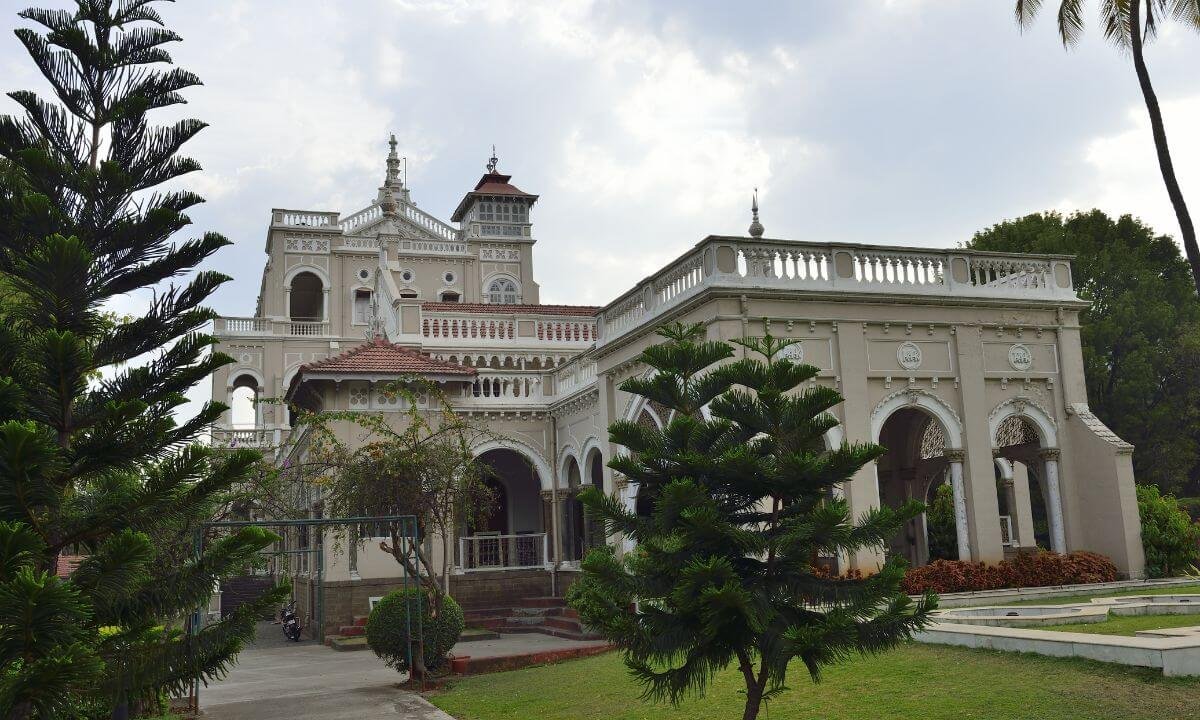Discover Pune's Historic Sites: A Guide for Content Creators
Often called Maharashtra's cultural centre, Pune is rich in history and customs. Pune presents many chances for content creators to investigate and record, given its rich legacy in many old sites. Every site has a tale that might motivate gripping stories, from grand forts to peaceful temples. We will explore some of Pune's most famous historical sites—Shaniwar Wada, Aga Khan Palace, Pataleshwar Cave Temple, and others—along with helpful advice for producers on faithfully depicting their architectural beauty and historical relevance on this blog.
Shaniwar Wada: The Heart of Pune’s History
Shaniwar Wada is the most well-known historical monument in Pune. Constructed in 1732 as the Maratha Empire’s Peshwas’ seat, this magnificent example of Maratha architecture mixed with Mughal inspirations is the superb entrance gates, finely carved wooden pillars, and verdant gardens, which inspire grandeur that carries guests back to antiquity.
Shaniwar Wada gives multimedia creators many chances to highlight architectural splendour. Use the golden hour—that is, immediately after sunrise or before sunset—to photograph the warm glow on the stone walls. While stressing the grandeur of the structure, wide-angle lenses can help frame it whole. Consider also getting close-ups of complex carvings and details to communicate historical tales.
Researching and distributing tales about important events that happened here will also help to improve storytelling. Including stories of bravery or investigating its significance in the history of the Maratha Empire would help your material captivate your readers more profoundly.
Aga Khan Palace: A Symbol of Freedom
Built by Sultan Muhammad Shah Aga Khan III in 1892, the Aga Khan Palace is another famous monument. Apart from its architectural grace, this excellent construction is well-known for its historical importance during India’s independence fight. During the Quit India Movement, it housed notable leaders like Mahatma Gandhi in prison.
If you want to convey this site’s spirit, pay close attention to its elegant Italian arches and large lawns. Camera Advice: Try several angles: from low points to highlight the height of the arches or from above to catch the garden’s symmetry. Use natural light to emphasize textures in the masonry.
Talk about the palace’s role in Indian history to incorporate narrative. Sharing personal thoughts or historical interview materials would enrich your material and give people a better understanding of this important place.
Pataleshwar Cave Haven: A Spiritual Haven
Another must-see location in Pune is the 8th-century Pataleshwar Cave Temple. Built from stone, this ancient temple honours Lord Shiva and features an amazing rock-cut design. The temple boasts a big Nandi (bull) statue and finely carved pillars reflecting old workmanship.
For those who enjoy photography, catching the interaction between shadow and light inside the cave will produce striking pictures. Use extended exposure techniques to record movement—like flowing water if present—or try several perspectives to accentuate architectural elements.
Stories could centre on local stories connected to Lord Shiva or first-hand accounts from guests who come to the temple for spiritual comfort. Speaking with local followers might offer a special understanding of their customs and ideas.
Sinhagad Fort: An Historical Trip
Sinhagad Fort is a mediaeval fortification vital during many conflicts in Indian history, just outside Pune. Trekkers will find the fort a perfect spot because it provides amazing views of the surroundings.
Sinhagad Fort offers content writers a chance to integrate adventure with historical narrative. To highlight its strategic relevance in photography, capture panoramic views from many vantage points around the fort. Early dawn walks might offer misty scenery that lends a magical feel to your pictures.
Add stories of influential people like Tanaji Malusare, who notably battled for this fort during Shivaji Maharaj’s rule. Audiences looking for adventure and history will find resonance in tales of local mythology or personal experiences told during hikes.
Lal Mahal: A Glimpse into Royalty
Built initially for his wife Jijabai and son Shivaji Maharaj in 1630 by Shahaji Bhosale, the Lal Mahal is evidence of Pune’s regal past. Though rebuilt after its original was demolished, it has historical value since Shivaji lived there in boyhood.
For artists visiting Lal Mahal, breathtaking pictures can be created by capturing its vivid red façade against clear blue sky. Focus on architectural aspects and classic ideas reflecting Maratha civilisation in your photography.
Storytelling can incorporate tales from Shivaji Maharaj’s life or significant events that took place right here. Having local historians or coming during cultural events would further enhance your material.
Conclusion
The ancient sites of Pune are dynamic storytellers ready to be discovered via narrative and photography, not only relics of the past. Content creators have countless chances to take breathtaking images by visiting sites, including Shaniwar Wada, Aga Khan Palace, Pataleshwar Cave Temple, Sinhagad Fort, and Lal Mahal, therefore creating stories that viewers will find relevant.
Remember to embrace Pune‘s architectural beauty and cultural value as you explore its rich legacy in your work. Whether you capture minute details or share stories from local legends, let every piece of material capture the spirit of this amazing city—a real treasure store for any artist wishing to motivate people via their camera.
- Architectural photography, Content Creation, Cultural heritage, film shooting, film shooting location, Historic Sites in Pune, Location for photoshoot, music videos, photo shoot location, Photography, photography location, Photography Tips, Pune History, Scene Locate, SceneLoc8, Travel blogging, vloggers

